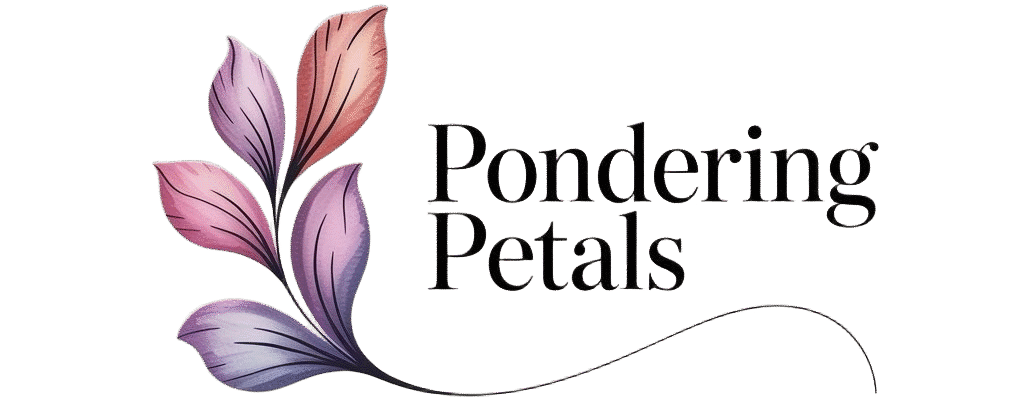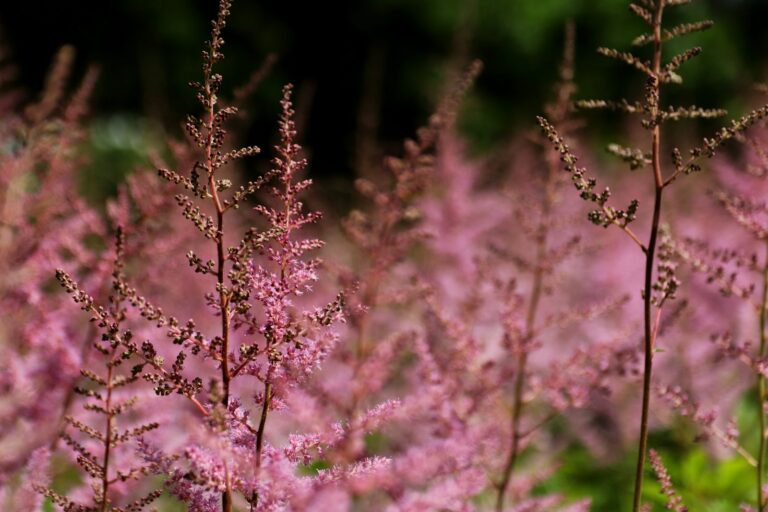Astilbe Colors: Pink, Red, White, Purple Varieties Guide
Your shade garden reaches 24 inches in height with muted green foliage while your neighbor’s astilbe display towers at 42 inches with vibrant plumes in deep crimson and pure white[1]. The difference comes down to variety selection matched to color preferences and spatial requirements. Astilbe flowers span a spectrum from soft whites to intense reds, with each color group offering distinct heights and bloom timing for layered garden displays.
💡Master comprehensive astilbe cultivation from color selection through design implementation with our complete astilbe guide for vibrant shade gardens.
Pink Astilbe Varieties: Light to Deep Intensity
Categories of pink astilbe have an advantage in the market because they show the broadest amount of intensity. The lighter color light pink makes gentle romantic touches in woodlands. ‘Little Vision in Pink’ is a lovely light pink plume that grows to 16 inches tall, delicate and thin[2]. The flowers take off in late summer, when many shade perennials complete their display cycle. That small variety performs in front edges, brightening darker corners with a gentle color but preventing an overflow of companion plants.
‘Peach Blossom’ produces peachy pink flowers when the spring is the peak season through early summer. The light coral colors complement purple-flowering hostas that flower together. It is 24 inches tall and shows glossy green divided foliage[3]. Placing it in a group of three or five for the eye as opposed to one single plant at a time.
Moderate pink varieties bridge the gap between light and deep selections, offering versatile color options for mid-border placements.
Moderate pink types offer a transition color to light and dark palette. One of these is known as ‘Bressingham Beauty’, in which bright pink flowers grow on tall arching plumes[4]. This cultivar blooms from early to mid-summer and achieves heights between 36 and 40 inches[5]. Short, tightly clustered flower clusters are appealing for a while, but then they slowly fade. Store this taller variety in the back of its borders at the edge at a height that creates vertical interest.
On the other hand, ‘Delft Lace’ offers soft apricot-pink flowers on deep red stems. The visual intricacy behind flower color with stem color can enrich the overall effect of this kind (single tone). Floral colors have a striking contrast on flowers and stem color, which is something a single-toned type cannot provide for a wide variety. Blue-green foliage with red highlights provides year-round interest and flowers don’t fade. This type reaches 36 inches high in bloom when they are finally ready[1].
Deep pink-shaded areas receive vibrant color that pops out across large areas. ‘Maggie Daley’, in other words, makes tall fluffy spires of deep pink plants that lift from dark, glossy foliage[2]. The bloom of 24 inches tall and dense-knit in clusters[2]. Blooms bloom in late summer and persist for long durations. The leafy green is a perfect counterpoint to golden sunlit ground cover like creeping Jenny.
Red Astilbe Varieties: Scarlet to Burgundy Tones
Red astilbe varieties range from bright scarlet to deep burgundy. True red cultivars shatter the domination of pink color for most astilbe varieties. Of all the varieties of astilbe, the shade of ‘Fanal’ is the darkest red[4]. This cultivar produces thick, narrow dark crimson red blossoms that appear early to mid-summer[4]. The foliage comes out bronze-red and becomes deep green after maturity[1]. Bloom plants reach 24 inches tall[1][5].
For ‘Montgomery’, magenta-red plumes with red-tinted stems and foliage tips. These upright flowers encompass a vast margin of green vegetation and become emergently bronze-red. This flavor reaches up to 24 inches on peak development. Mass plantings, from afar, are breathtaking spectacles. The deep-red color also adds impact in heavily shaded areas that get lost in darkness.
In mid-summer, its name ‘Burgundy Red’ creates large plumes of dark-red flowers and grows a total 24 inches high and 24 inches wide of this variety[2]. Flowers begin as deep burgundy buds, and then burst forth in rich red blossoms. The color persists longer than light-colored reds and fades at the end. The chosen species can also be combined with chartreuse-leaved hostas for high color density.
‘Red Sentinel’ is a brilliant scarlet red petal that graces deep blood-red stems[2]. Narrow spires in mid to late summer and measure only 24 inches tall[3]. Lacy dark green leaves are textured against the bright and fierce flower. Place the plants next to large-leaved shade perennials to accentuate the fine texture.
White Astilbe Varieties: Pure to Creamy Tones
In addition, dark corners are more brightened than the colors by the white variety of astilbe. Pure white cultivars reflect available light; the cream-colored varieties can seem muddy in deep shade. Instead of cream-colored flowers, ‘Rock and Roll’ blossoms in true whiteness[1]. The white plumes rise off reddish stems for striking contrast. Deep green leaves create compact mounds from 24 to 28 inches in height[1]. Plant with at least one companion that emphasizes the red stems, for a total eye-catching visual effect.
‘Bridal Veil’ offers soft vertical plumes of creamy white plants[3]. The glossy green foliage reaches 30 inches high with 18 inches wide[3]. This arendsii hybrid blooms in early to middle parts of the growing season[3].
💡Understand how color availability varies by parent genetics with our detailed species characteristics guide covering Arendsii, Japonica, and Chinensis groups.
If it receives sufficient moisture or remains in partial shade, the variety responds well to full sun.
White astilbe varieties maximize light reflection in deeply shaded corners where other colors disappear.
‘Snowdrift’, producing pure white plumes, brightens shaded areas[4]. That cultivar reaches 24 inches tall[5]. Flowers mature in early to mid-summer and remain white without yellowing. This variety is best suited to mass plantings in dappled shade as its brighter color schemes allow for focal points.
Purple and Lavender Astilbe Varieties
Purple and lavender astilbe varieties are pink in color and not true purple. There’s no astilbe that grows the deep violet of flowers like salvia or delphinium. Available options span from pinkish-purple to lavender-pink. But “Purple Candles” is the tallest option in this hue group. It creates dense poker-like plumes that grow up to 42 inches[1]. Violet-red flowers are present, and then soften into purple[1]. Bronzeish in tone occasionally appears in dark green foliage[1]. This chinensis cultivar endures more heat and sun than other types of astilbe[1]. Use it as a back-of-border specimen or for forming natural screens in shade gardens.
‘Amethyst’ has lilac-purple flowers with pink undertones[2]. In plants of 36 inches in height, large plumes grow from early to mid-summer[2]. The pinkish-purple hue balances garden schemes instead of creating bright statements. Combine this variety with lavender-blooming hostas for color pairing.
‘Pumila’ may be the least big of purple offerings. This dwarf variation has a maximum height of 12 inches[3][5]. Lavender-pink flowers on narrow upright spires occur in late summer[2][5]. The fine fern-like foliage slowly spreads to create ground cover[5]. Where the size would accommodate the scale, this cultivar also works in rock gardens, container plantings or front borders.
‘Visions’ produces raspberry pink flowers blooming on small plants[1]. In its blooming phase the variety grows up to 14 to 18 inches tall[1]. Coarse dense foliage in medium green creates mounds topped with short slightly fragrant plumes[1]. Compared with Japanese or arendsii types, this chinensis hybrid is a more vigorous and heat-tolerant variety[1]. The varietal flowers burst forth in midsummer and grow reliably in a wide variety of growing conditions.
‘Hyacinth’ shows light lavender-pink flowers on deeply lobed dark green foliage[2]. The large plumes reach 36 inches in height[2]. Blooms are seen in late spring to summer. Choose this taller variant with white tuberous begonias for romantic combinations in cottage gardens. Soft fuzzy astilbe flowers contrast with rosette-form begonia blooms.
Bloom Timing and Seasonal Planning
Depending on color groups, the timing of flowers is different, and when selected strategically this varies for each type of blooming, extending the flowering season.
Early bloomers such as ‘Peach Blossom’ begin in late spring[3][5]. Mid-season variants such as ‘Fanal’ and ‘Montgomery’ bloom through early to mid-summer[1][5]. Late bloomers, such as ‘Pumila’ and ‘Maggie Daley’, continue to add color into late summer[2][5]. Three varieties can be integrated and bloom times can be staggered to keep the blossoms in continuous bloom for two to three months[5].
Height Categories for Layered Designs
Height differences create possibilities of layering planting schemes for visual enhancement.
Dwarf varieties under 18 inches are appropriate for front borders and container gardens:
- ‘Pumila’ at 12 inches[2][3]
- ‘Little Vision in Pink’ at 16 inches[2][3]
Medium-height selections from 24 to 30 inches fill middle border areas:
- ‘Fanal’ at 24 inches[1][2]
- ‘Maggie Daley’ at 24 inches[1][2]
- ‘Rock and Roll’ at 24-28 inches[1]
Tall cultivars over 36 inches create back-of-border focal points:
- ‘Purple Candles’ at 42 inches[1]
- ‘Bressingham Beauty’ at 36-40 inches[1][5]
| Variety | Height | Color | Bloom Time | Best Use |
|---|---|---|---|---|
| Pumila | 12″ | Lavender-pink | Late summer | Front border, containers |
| Little Vision in Pink | 16″ | Light pink | Late summer | Front border |
| Fanal | 24″ | Dark crimson | Early-mid summer | Middle border |
| Maggie Daley | 24″ | Deep pink | Late summer | Middle border |
| Rock and Roll | 24-28″ | Pure white | Mid summer | Middle border |
| Bressingham Beauty | 36-40″ | Bright pink | Early-mid summer | Back border |
| Purple Candles | 42″ | Violet-red | Mid-late summer | Back border, screens |
Color Visibility in Shade
In shaded areas, color exposure matters. Bright reds and clean whites are easy to see in low light, while the soft pinks and lavenders blend into the background. Even deep hues like those in “Fanal” or “Montgomery” create strong focal points[1]. In ‘Little Vision in Pink’ and ‘Hyacinth’ light colors soften transitions from bolder points[2]. White ones like ‘Rock and Roll’, as well as “Snowdrift,” maximize light reflection into dark corners[1][4].
Companion Planting by Color
Astilbe flower colors work well with foliage colors in companion plants:
💡Discover creative applications for different color palettes with our color combinations gallery featuring professional design examples.
- Pink varieties blend with purple or burgundy leaves of heucheras
- Red selections stand out against the golden or chartreuse of hostas
- White cultivars complement dark green ferns and broad-leaved perennials
- Purple astilbes harmonize with silver-foliaged partners such as Japanese painted ferns
Successful color selection depends on understanding your garden’s light conditions, available space, and desired bloom timing.
Choosing Your Color Scheme
Color selection is best accomplished by taking a look at the type of light conditions in your specific garden and the extent of available space where the bloom is ideally timed. The visual interest is extended by using several different colors in a very complex mixture to create a tapestry of color effects.
💡Extend your color enjoyment indoors with our guide to colors for arrangements including best cultivars for cutting and vase life tips.
Concentrating on single colors with different intensities produces more coherent schemes.
💡Implement effective color combinations in your landscape with our comprehensive color design strategies including monochromatic and complementary schemes.
Either approach works when the varieties match site conditions and maintenance capabilities.
💡Explore beyond color to discover the full range of cultivar characteristics with our complete variety guide covering height, bloom time, and foliage options.
Key Sources:
[1] 12 Brilliant Astilbes | Fine Gardening
[2] 19 Different Types of Beautiful Astilbe Varieties | Epic Gardening
[3] 15 of the Best Astilbe Varieties | Gardener’s Path
[4] Mid-Season Astilbe Varieties For Your Garden | Gardenia.net
[5] Growing Astilbe in Iowa | Iowa State University Extension
Lily Morgan is a home gardener. She grows houseplants and designs small-space gardens. She shares what she learns from experience. Lily offers simple, practical tips for plant lovers. Her goal is to help others garden with confidence. She wants to help them grow, one leaf at a time.


